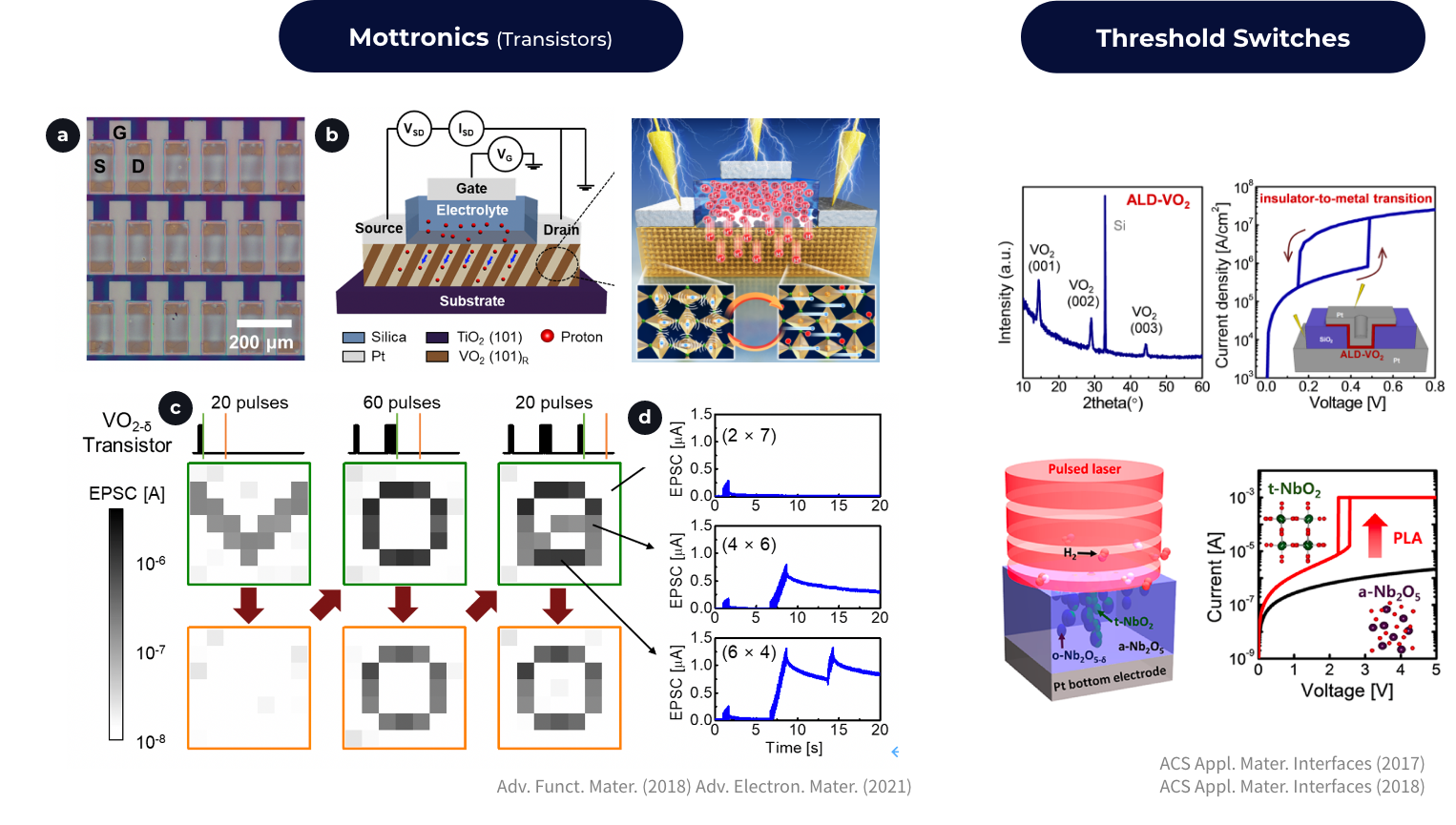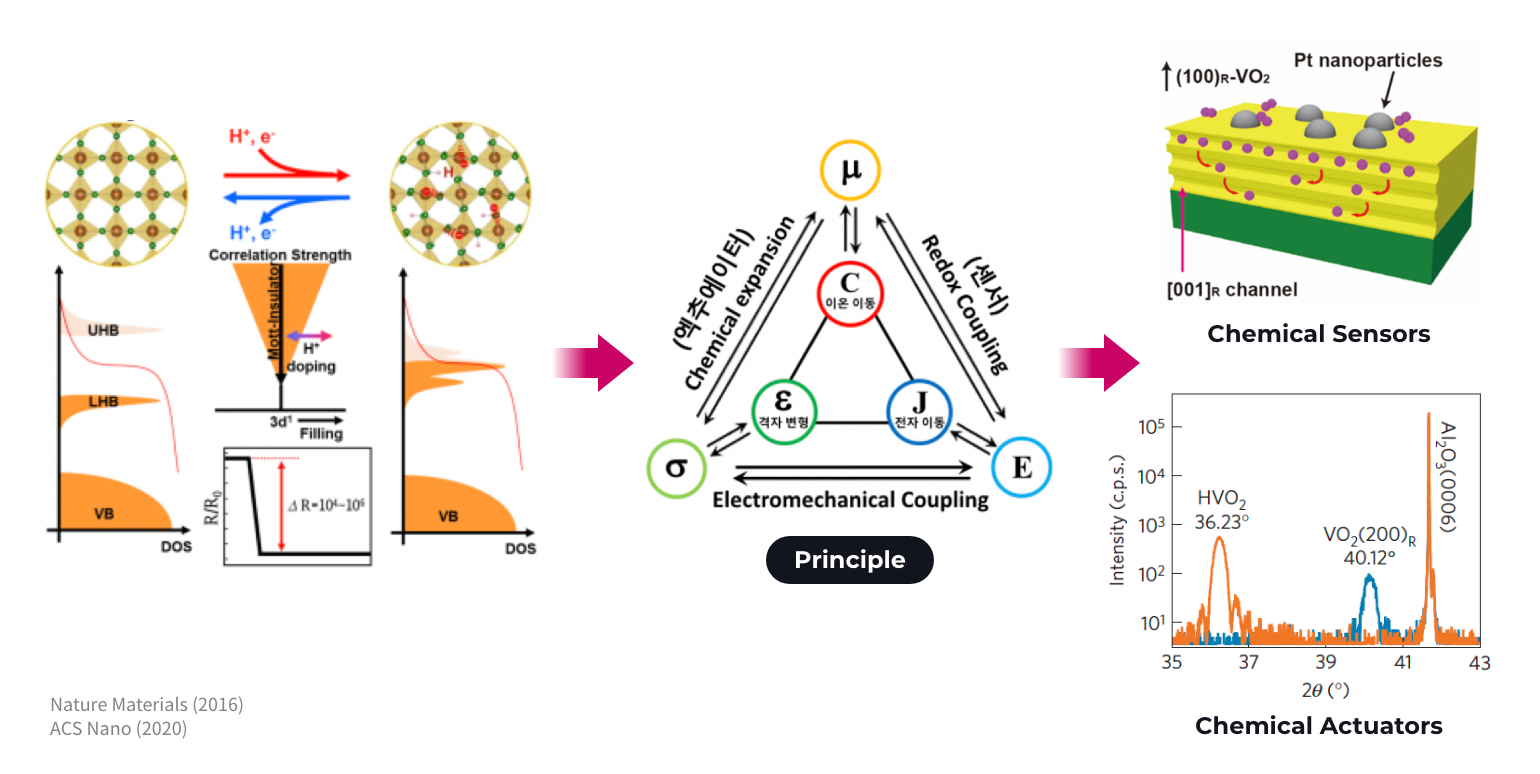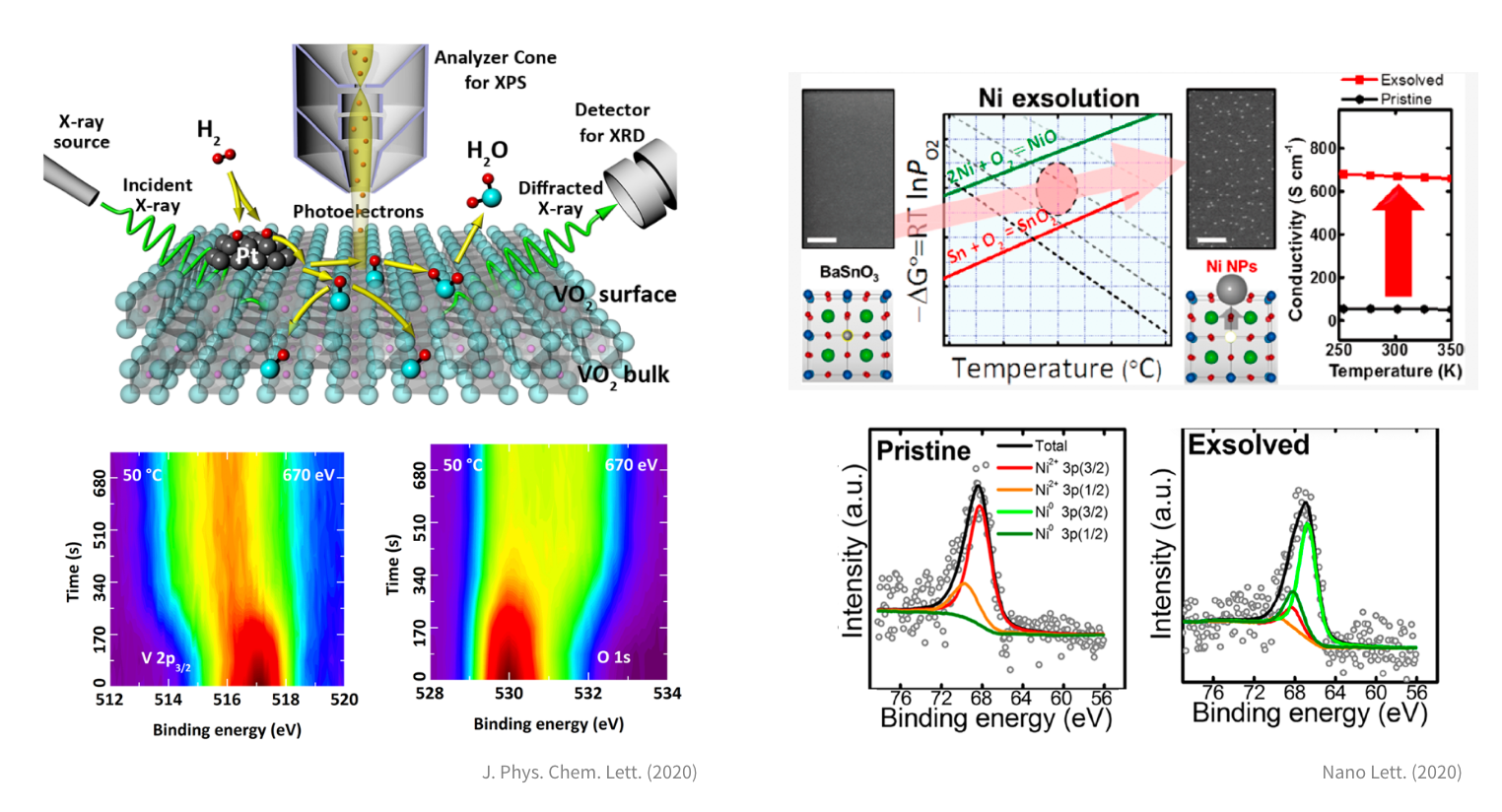Materials Discovery and
Defect Control of Emerging Oxide
Materials with Phase Transition
Oxide semiconductors with partially occupied d electrons (i.e., correlated oxides, VO₂, NbO₂, NdNiO₃ etc,..) have aroused great interest due to extreme sensitivity of electronic phase transition with external stimuli. Because of the sensitivity near the phase boundary, small changes in the crystal structures or charge density near a transition between competing phases can abruptly transform into different electronic phase, leading to large modulation in the electrical/optical/mechanical properties.
The ability to control a variety of functionalities with stimuli is one of the main issues in correlated oxides and their heterostructures for the application of extremely sensitive sensors and low energy-consuming devices. Among the various stimuli, (intrinsic or extrinsic) atomic defects have a strong influence on the d-band filling, which is the core concept of correlated electronic systems. The functional defect suggests the possibility of reversible and dynamic control of topotactic phase modulation in correlated oxides and opens up the potential application in proton-based Mottronics and novel hydrogen storage. Oxide/Quantum Materials Laboratory (OQML) are conducting intensive research and development on the materials discovery and defect control of emerging oxide materials with steep phase transition.

Materials Discovery and Defect Control
of Emerging Oxide Materials with
High Electron Mobility
Oxide semiconductors with ionic bonding have received extensive interest and demands for the applications of new functional devices (e.g., display, touch panels, high-speed electronics, power electronics) due to its unprecedented characteristics. The excellent properties of oxide semiconductors stem from the conduction bands with highly dispersive and spherical s orbitals (4s⁰, 5s⁰); the electron effect mass is small, and thus electron mobility are exceptionally high.
In particular, alkaline earth stannates (ASnO₃) exhibiting the perovskite crystal structures have recently attracted much attention due to exceptionally high room-temperature electron mobility, room-temperature conductivity, high optical transparency in the visible range etc.. Despite superior properties of perovskite stannates, various defects are formed in ASnO₃ thin films; these defects limits device performances based on electron transport; multidimensional defect controls are required. Oxide/Quantum Materials Laboratory (OQML) are conducting collaborative research and development on the materials discovery and defect control of emerging oxide materials with high electron mobility.

Next-Generation Electronic
Devices based on Emerging
Quantum/Oxide Materials
Emerging oxide materials with maximized properties can dramatically improve the performance of next-generation semiconductor devices and energy devices. The distinct properties of emerging oxides are key ingredients for future technology(e.g., 1) transparency and high conductivity for transparent electronics, 2) a metal-insulator phase transition for a low-power switching device and an ultra-sensitive sensor device, 3) ferroelectricity for nonvolatile memory devices, 4) high electron mobility for high-speed electronic devices). Based on the new functionality of various oxide semiconductors developed by OQML, Oxide/Quantum Materials Laboratory (OQML) are also conducting research and development on the possibility of realizing low-power and high-density electronics, low-loss and high-bandwidth optical devices and future applications that could not be achieved before.

Multi-functional Sensors
based on Emerging Quantum/
Oxide Materials
The 4th industrial revolution refers to the establishment of a communication between devices and humans through the Internet of Things (IoT). Thus, sensor technology is the core element of the 4th industrial revolution. Above all, research on sensor based on highly sensitive semiconductor materials is essential in order to convert external input signals into electrical signals. Sensitive quantum/oxide materials and nanostructures can dramatically improve performance of various sensor devices (e.g., an image sensor that can sense light with various wavelengths, a bio sensors that can detect very small amount of pathogen, a gas sensor that can monitor exposure of dangerous gases in real time, etc.). Oxide/Quantum Materials Laboratory (OQML) is performing research on the synthesis of emerging quantum/oxide materials that can be applicable for various sensors.

Atomically Controlled
Oxide Heterostructures and
Interface Control
Oxide/Quantum Materials Laboratory (OQML) aims to maximize the device performance for future semiconductor and energy applications by realizing the quantum effects of nanostructures and new properties of oxide semiconductor materials that are beyond or impossible to achieve the characteristics of conventional semiconductors.
In particular, by using the technique of synthesizing an atomically controlled oxide thin film through real-time layer-by-layer monitoring, the research on the synthesis of a high-quality oxide thin film is carried out to discover new oxide semiconductors and new properties at the interface (e.g., transparent conductivity/metal-insulator transition phenomenon/ferroelectricity/high electron mobility, etc).
In addition, we are also developing the original technology for new oxide materials, new synthesis strategy (e.g., low-temperature growth) and heterogeneous integration (e.g., epitaxial lift-off) by precisely controlling multidimensional defects in the material.

Synchrotron-based
Characterizations for
Oxide Materials and Devices
Oxide/Quantum Materials Laboratory (OQML) not only studies on the synthesis of new materials and the realization of new devices, but also characterizes whether materials and devices are properly synthesized/implemented in the desired direction using synchrotron radiation. The crystal structure and electronic structure of the synthesized material is precisely analyzed through Pohang Accelerator Laboratory at our campus and worldwide synchrotron facilities, and then a database on structure- properties-performance relationship is established. In addition, by actively conducting collaborative research with theoretical and experimental groups, our lab is leading the discovery of new oxide materials.




